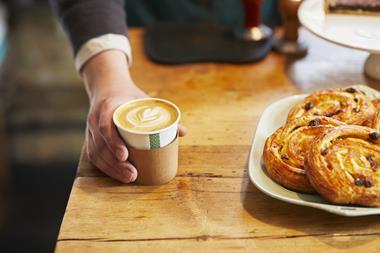Is the weekly ‘big shop’ dead? Last year the Co-operative produced a report which pointed to the fact that, while the last rites are some way off, it’s definitely in decline.
Is the weekly ‘big shop’ dead? Last year the Co-operative produced a report which pointed to the fact that, while the last rites are some way off, it’s definitely in decline.
According to its figures, more than half of British people have cast off the traditional Saturday shop that would have once seen them right through the week. Nowadays, they’re more likely to be avoiding supermarkets and hitting local stores with a ‘little and often’ mind-set that’s certain to cheer c-store retailers.
“The ‘little and often’ top-up shopping trend is becoming more popular,” says Michael Freedman, senior shopper insight manager at IGD. “Some 92% of all shoppers conducted a top-up shop last month, up from 83% in 2014. These types of shoppers are vital for the success of convenience stores, as it is the go-to channel for top-up shopping. Almost two-thirds (63%) of all shoppers have used a convenience store for a top-up shop in the past month, while 44% used a supermarket.
“When top-up shopping in c-stores, shoppers are looking for value for money, familiar products, availability, standout promotions and long shelf lives. Ultimately, they want convenience to be more convenient, which is why they typically choose to conduct their top-up shop at the channel that is most convenient for them.”
These findings are firmly underlined by research from Unilever which shows the top-up mission is now the number one reason that customers go into a convenience store in the first place.
Getting the top-up mission right might appear almost a no-brainer. After all, alongside ‘meal for tonight’ and ‘food-to-go’, those ‘little and often’ shoppers are at the heart of what convenience retail is all about.
Yet Mark Canniford, who has Spar stores in Weston-super-Mare, Somerset, advises that you can’t take these customers for granted. He insists that if you don’t meet their needs then even the most loyal local shoppers will eventually go elsewhere.
“Without top-up shopping we just wouldn’t have a business,” he says. “These customers are naturally attracted by the nature of what we do. But you can’t just ignore it – you have to ensure you’re meeting their top-up requirements.”
Mark believes that what makes top-up different from other missions is illustrated by the various customers who come to his stores. He says that at his high street store customers basically come in for an “express-style” shop and they’re mainly looking for lunch or meal-for-tonight inspiration.
“On the other hand, our second store is near an estate,” he says. “Top-up there is an essential part of the trade. The customers who come in will do their weekly shop somewhere else and then pop in for bread and milk every other day, and then milk every other day as well.
“In the high street 60% of our trade will be different every single day. But our estate store is all about the regulars, who are coming in to buy things such as milk, cream, bread and vegetables. They’re after the basics, the things you’d never want to run out of, ever.”
Nick Widdowson, merchandising and creative controller at Unilever UK, points out that most convenience customers don’t use a basket, but when they do they’re likely to spend twice as much. “It’s a good idea to provide them towards the back of the store within the top-up zone so people who’ve got their hands full can pick one up,” he says.
According to HIM, just over half (51%) of top-up shoppers have two to four items in their basket. The challenge for ambitious c-store retailers is to harness shoppers’ impulsive side to turn that trip for a loaf of bread into a shop that takes a couple of carrier bags to take home.
Top-up shoppers are often time-poor, but willing to flash the cash if the in-store offer is spot on. And according to HIM marketing executive Ruth Cousins, going all out to tempt them with impulse items is the key to improving an already fairly healthy basket spend.
“Some 33% of top-up shoppers are big spenders forking out more than £8.01 – but more than half are spending less than £6,” she says. “Retailers can boost these shoppers’ baskets by tempting their impulsive side with crisps, snacks and confectionery.”
Cousins adds that 18% can be swayed by crisps and snacks to eat on the way home, or to save until later – and it’s even better if these items are on promotion.
“Top-up is one of the missions where shoppers are more likely to buy on promotion,” she says. “Keep your offers rotating every few weeks so that shoppers know they can come to you for a competitive deal; 28% of people who bought on promotion while on a top-up shop purchased soft drinks (to take home), household items and tinned or packaged grocery.”
Mark says that hitting this sweet spot is about leveraging promotional activity while cross-selling complementary products. “The only way I’ve found to get top-up customers to spend more in my experience is strong promotional activity, and placing complementary products around the top-up items,” he says. “So if you come to buy bread in our place it’s right next to the promoted yogurts. Scottish yogurts have worked really well for us. They’re quite expensive, but when they’re promoted and near the essential stuff, people really do pick them up.”
focus on cuisine and brand promotion to drive sales
Yilmaz Erceyes, brand director for savoury meals at Premier Foods, says 60% of consumers visit their local c-stores to top up on essential cupboard and meal time essentials in-between their weekly shops.
“We advise our convenience customers to follow a few simple steps to help drive sales within their stores: create displays centred around a particular cuisine, i.e. Chinese, Indian or Italian. This will not only excite and inspire shoppers but make it easier for them to make a quick meal decision and increase their basket spend; if a new product is launched from a well-known brand, place it near the existing range to capitalise on the strength of the brand name; and stock pricemarked packs from brands to help drive impulse purchases. PMPs can help shoppers feel they are getting great value and 85% of retailers agree that these formats are either important or very important to their business.”
Sharwood’s recently launched a ‘World Inspired’ range alongside new microwavable Sharwood’s side dishes that include Saag Aloo, Bombay Potatoes, Chickpea Sabji and Tarka Dahl. The launches will be underpinned by a packaging refresh across the range.
Availability
Mark points out that making the most out of top-up shoppers is one thing, but if your availability fails they’ll stop using your store, however powerful your promotions.
“Nowadays you really do need 100% availability and that means having a strong relationship with good suppliers,” he insists. “If they let you down, your top-up range will disappear and your top-up shoppers won’t come back.”
Over in Horsham, West Sussex, Budgens store owner Chris Shelley says that locking down your range is the right way to keep top-up shoppers returning week after week. He has a range of three price points on major lines throughout the store so customers can choose premium, standard or own label, depending on their budget.
“We’ve got a big focus on local products here, and we always try to incorporate that within the top-up products as well,” he says. “It’s about having a decent amount of range. So while someone might pop in for a pint of milk, or a loaf of bread, there’s enough range that, once they’re in the store, people can do a decent shop and get a whole meal for the evening.”
Ensuring range, availability and promotions are on-point is crucial for c-stores that want to make a success of the top-up mission. But, according to further research from IGD, there might be one major element retailers are missing out on: customer satisfaction. “Our shopper data demonstrates shoppers tend to be more satisfied when visiting supermarkets or food discounters for a top-up shop,” says Freedman. “Therefore, it’s also essential that convenience stores offer shoppers attractive prices, ranges and layouts for their top-up shops, to keep them coming back more frequently.”
“Satisfaction” can often be a code word for “service” – as figures from HIM suggest. It found that product availability is only the third most important factor for a top-up shopper, with staff friendliness leading the survey.
“Staff friendliness is the most important factor to the top-up shopper, followed by cleanliness of the store,” says Cousins. “They are regular visitors with 65% of them visiting at least once a week, meaning they want their experience to be easy and pleasant.”
This underlines what many of you already understand – that local stores are providing an all-round retail package to shoppers, not just pure convenience. Although, in Mark’s experience, friendliness isn’t top of the list for all customers.
“Obviously, it’s essential to give customer satisfaction. There’s no point in being a miserable old sod!” he says. “But I’ve found that top-up shoppers – especially the younger ones – don’t seem to be as worried about the friendly, well-mannered person behind the till as they are about price and availability.
“They’ll often be talking to their friends on their phone while you’re serving them. You could say that’s being rude, but they don’t see it that way – they just want to get what they came in for (without interrupting their conversation) and go. It really is a different world!”
Plenty is giving shoppers the chance to win a Troll doll every 15 minutes and the holiday of a lifetime as part of its new on-pack promotion with upcoming DreamWorks film Trolls.
Every 15 minutes shoppers will have the chance to win one of 12 collectable Troll dolls after they pick up a promotional pack. There will also be a grand prize of a two-week family trip to Australia’s Gold Coast.
Plenty hopes to use the partnership to increase purchase frequency and volume, making it beneficial for retailers to stock the range during this period.
Every shopper who picks up one of the promotional packs of Plenty will be directed to a dedicated microsite, www.winplentytrolls.co.uk, where they can enter a unique code to be entered into a draw to win a Troll doll. The competition will be open until 31 December, 2016 and the winner of the family trip to Australia will be announced on 5 January 2017.
The campaign is being promoted on TV, cinema, social media and in store.


























No comments yet